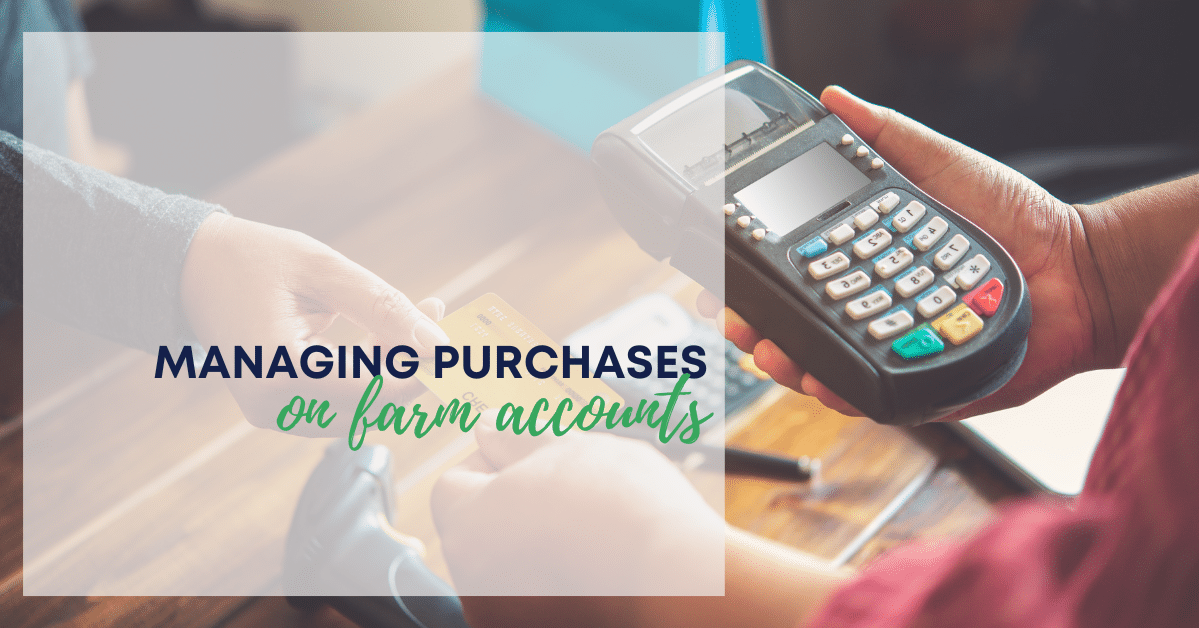
Do you ever get bills for your farm and wonder who got them or what it was for?
It’s often a hot topic of conversation at our Farm Office Plus workshops. Basically, how do we make sure that everything that is put on a suppliers account that you receive a bill for is correct.
This is more of an issue for some farm businesses than others. It’s generally not an issue for businesses where one person controls all the purchasing and also pays all the bills. The ones that seem to have the most trouble with it are larger businesses with staff and family members all making purchases. The other people that have trouble are those who may have relatives or others in the district with the same surname or operate under a few different business structures that are easily confused.
So what are we trying to achieve?
To only pay bills that are related to the farm business, not those that may belong to another unrelated business
Speeding up invoice checking and payments
Avoiding fraud or unauthorised purchases
Managing cash-flow with larger purchases
Keeping track of what has been ordered, especially when more than one person is ordering, or things take a long time to come in.
What does best practice look like? In the corporate world, individuals will generally have a purchasing limit. For example an admin person may be able to make purchases of up to $1,000, which will cover general stationery. Anything higher than this may have to be authorised by a more senior staff member who has a higher limit. Other staff members might have authority for a certain type of purchase, but not others. So a feedlot staff member might have authority to order all animal health products as needed, but cannot purchase anything else without permission. Clear guidelines are best for everyone.
Purchase orders are generally required for purchases over a certain amount. For those with xero have a look here. There are also stand alone apps, ordering functionality within other programs you may use or manual docket book solutions.
Tips for implementing a purchase control system in your business
Think about what you are trying to achieve? If you are trying to make sure suppliers in town bill the right business, consider sending them a letter or an email with your trading details, names and photos to make it easy for them. It’s a great idea if your business or theirs changes hands or they or you have new staff. If you use canva, have a look at this template I have mocked up. You can change the wording and the photos to suit your business.

If you are trying to better manage cashflow, it’s really about making sure that the person who pays the bills knows what is coming. Bags of dogfood and a few plumbing fittings are irrelevant, its about the big things like bulk fuel, fodder, replacement livestock, fert and large chem orders. Think about using an app to make a purchase order (you may or may not choose not to send it to the supplier, they can just be used internally) or just using a text or a whatsapp group to keep everyone that needs to know, in the know.
Think about what suppliers or type of goods your system needs to apply to?
Perhaps you have just one or two local businesses where misallocation of invoices is an issue. It’s okay to set up a purchase order system just for this supplier. If you continue to have trouble you can just start paying with a credit card and not put things on account.
What about online purchases?
Online purchases can be problematic for a few different reasons. You may not always get a simple PDF tax invoice emailed to you, the credit card reference may bear no resemblance to the business name you thought you were purchasing from and what you ordered may never arrive. Think about what you might need to set up for online purchases. It does not have to be complicated, it might be a note in a diary or a simple handwritten list to help you keep track of them.
Like any change you are trying to introduce, do a deep dive on what the issue really is, and talk to those involved. They might come up with some great ideas also.
Within your own team, make it standard practice that anyone purchasing anything on account give their name and the full business name, even if they know the person in the shop well. Some small businesses will use names in lieu of purchase orders, so purchases can be chased up if needed. A business card with the trading details on it can be useful if you have casual staff that are picking things up on short notice.
Share the love
[Sassy_Social_Share]

